Riding technique: The delayed front loop - how to do a stalled forward
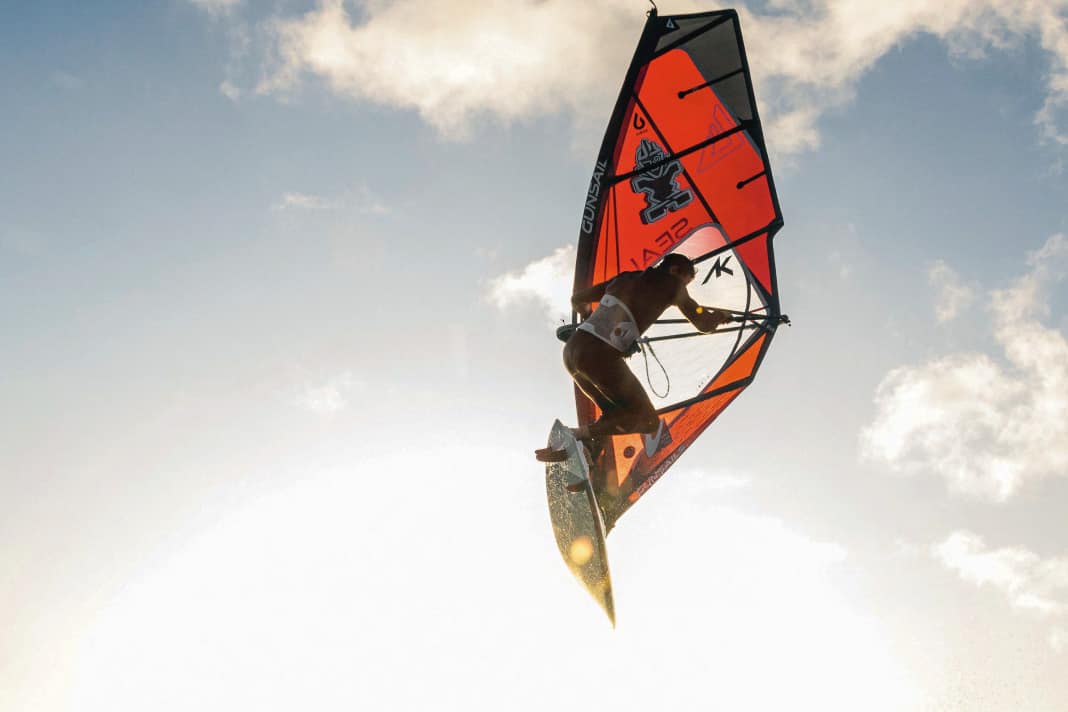





In this article:
The delayed front loop, known internationally as the stalled forward, was a sure-fire points scorer in the World Cup in the 1990s, until back loops and push loops slowly took over from it. However, the stalled forward is now experiencing a revival - and quite rightly so. Because the forward roll not only looks spectacular, but is also a highly technical move when jumped high enough. The good thing about it is that if you can do the spin loop, you can slowly increase the height - the transition from spin loop to stalled forward is therefore seamless. You can find out what's important here in the third part of our front loop series.
Spinloop vs. frontloop
So what distinguishes the Spinloop from the Front loop ? The spinloop, which we presented to you in detail in the second part of the series, is jumped on flat water or over small chops. Due to the lower jump height, the spin loop is initiated directly after the jump by actively pulling the sail tight. To complete the rotation, the sail is usually kept tight until the end. Or to put it simply: jump off, turn in and wait until it really claps. The stalled forward, on the other hand, is much more complex in terms of timing and can be divided into several phases: Take-off, climb phase, the point-of-no-return, the actual rotation and the landing phase.
Jump off, turn in and wait for the clap - that applies to the spin loop. The stalled forward is much more complex." (Flo Jung)
The delayed front loop explained step by step
A well-powered sail and ramps that are a little rounder and not yet close to breaking are ideal for practising stalled forwards.
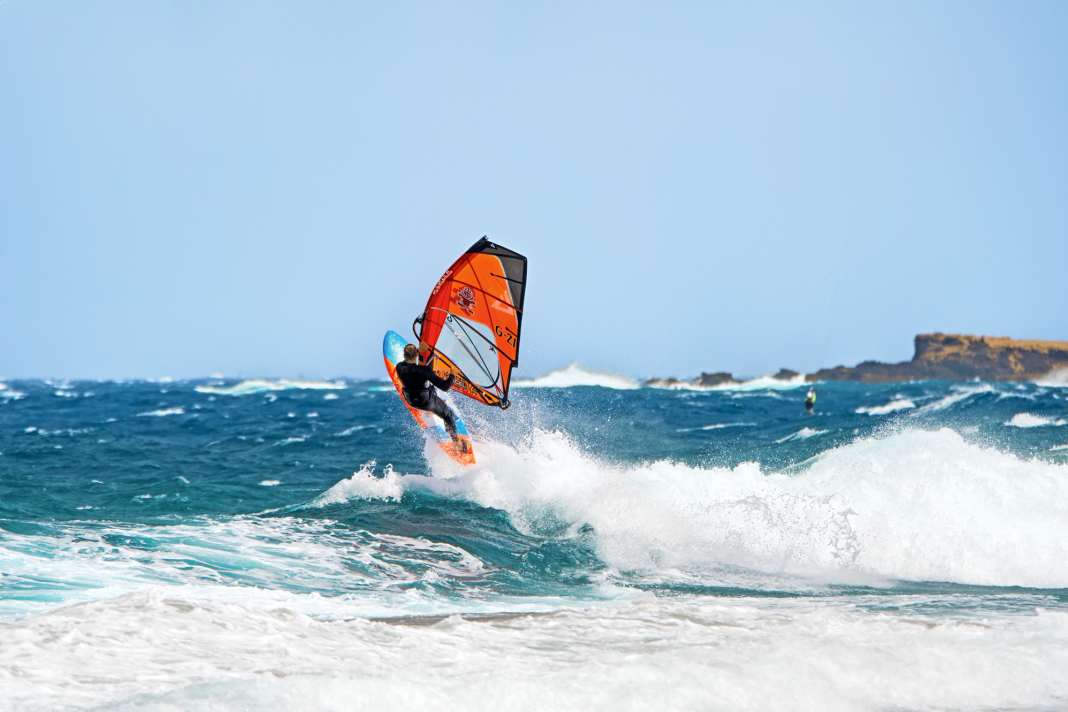





The 3 sticking points of the stalled forward
The stalled forward works according to the principle: decelerate, rotate, decelerate.
1) In the climbing phase it's all about getting it out of your head that you're planning a forward loop. If you are already turning in here, you will over-rotate. A good trick to delay turning in is to count to one: After the take-off, count to one out loud, only then do all the other steps follow, such as moving the sail forwards and the accompanying backwards sliding of the sail hand.
2) The point of no-return has arrived when the sail has been moved forwards and the bow has turned out of the wind as a result. The way in which the sail is moved determines the axis of rotation. If the front hand pushes the sail towards the tip of the board, the rotation becomes steeper. If you move the sail more to windward over the board, the rotation will be flatter - that should be the aim. In any case, you now need to pull through to accelerate the rotation.
3) In the landing phase the rotation is often delayed again. If you have a lateral rotation axis, you can aim for the landing point early and open the sail with the rear hand in a controlled manner if necessary. This allows you to hover under the sail in a controlled manner towards the landing point and you can also land high front loops on the tail in a controlled manner.
1. delay
- Front hand pushes the mast past the body towards the water
- Sail hand moves backwards at the fork
- Rear leg pulls the tail under the body and turns the tip of the board out of the wind
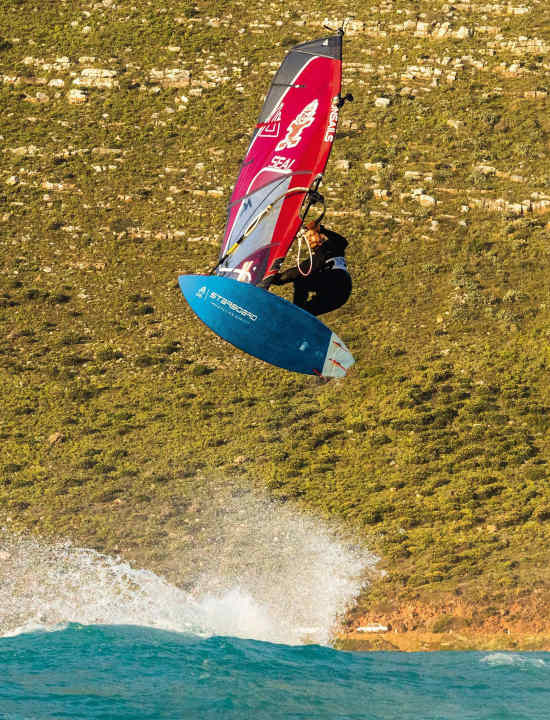
2. accelerate rotation
- Sailing hand pulls tight
- View over the back shoulder
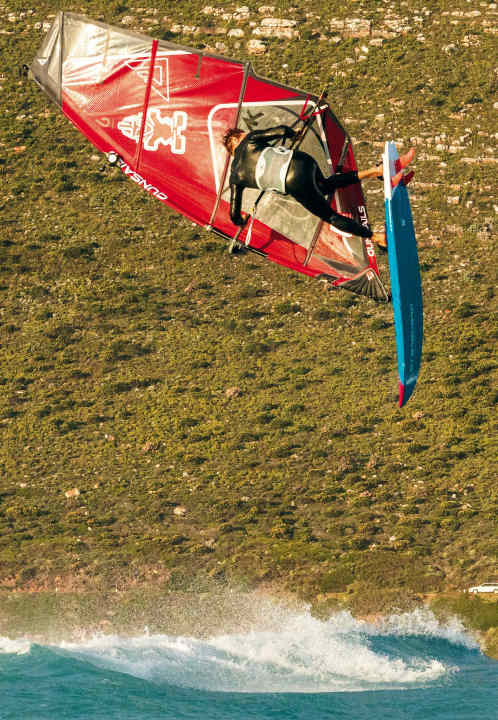
3. brake rotation
- Sail hand opens in a controlled manner, rotation slows down
- Orientation: View of the water surface
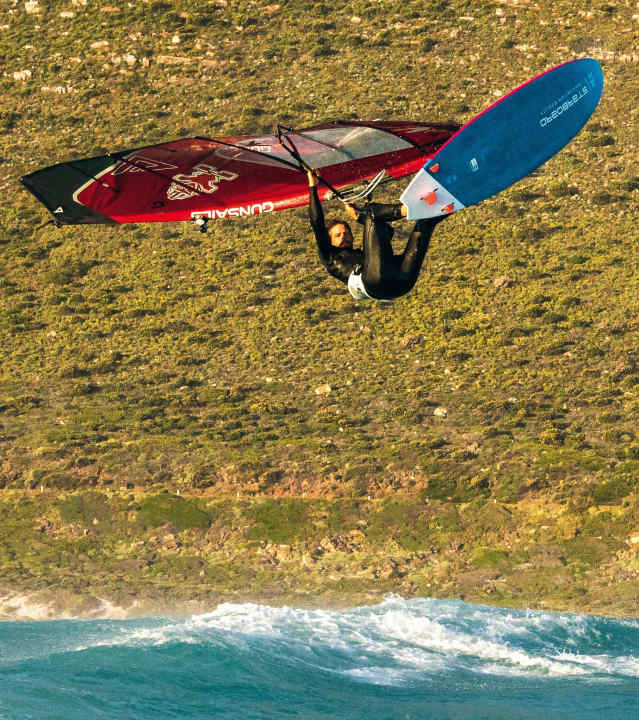
Of dropouts and low-flyers
The timing of the delayed front loop requires experience. If you turn in too early, there is a risk of over-rotating. If you wait too long, the result is a nasty back slap. Flo Jung has a few tips: "As long as you are in the climbing phase and the nose is pointing upwards, you can get out without any problems. For example, if you get cold feet when you look down. The material then always sails away to leeward.
As soon as you have moved the sail forwards at the apex and directed the nose of the board downwards, you have reached the point of no-return. You should then stay with the material and hold on tight. If you feel that the rotation is getting too steep or fast, you can let go of the back hand: This prevents you from over-rotating with the sail fully furled and maltreating the board.
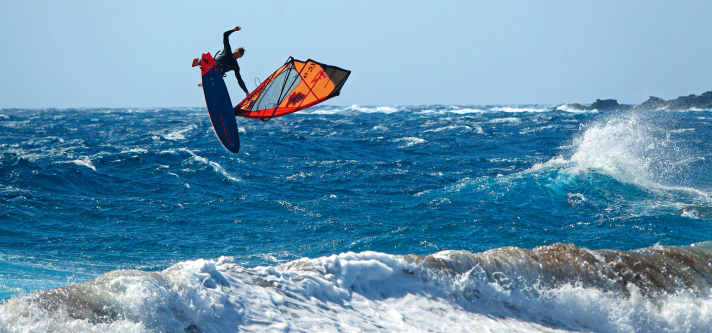
When learning stalled forwards, it is also often the case that you start the rotation too late or too much downwind. Then you pull into the void when turning in, there is almost no momentum from the sail. The same applies here: stay with the material and don't try to get out at all to avoid being hit by the material. As long as the board and sail are connected to you, you cannot injure yourself. In this case, however, you can't avoid the back slap. But there's also a good solution to this problem: impact protection waistcoats make things much more relaxed and hardly noticeably restrict your freedom of movement."

